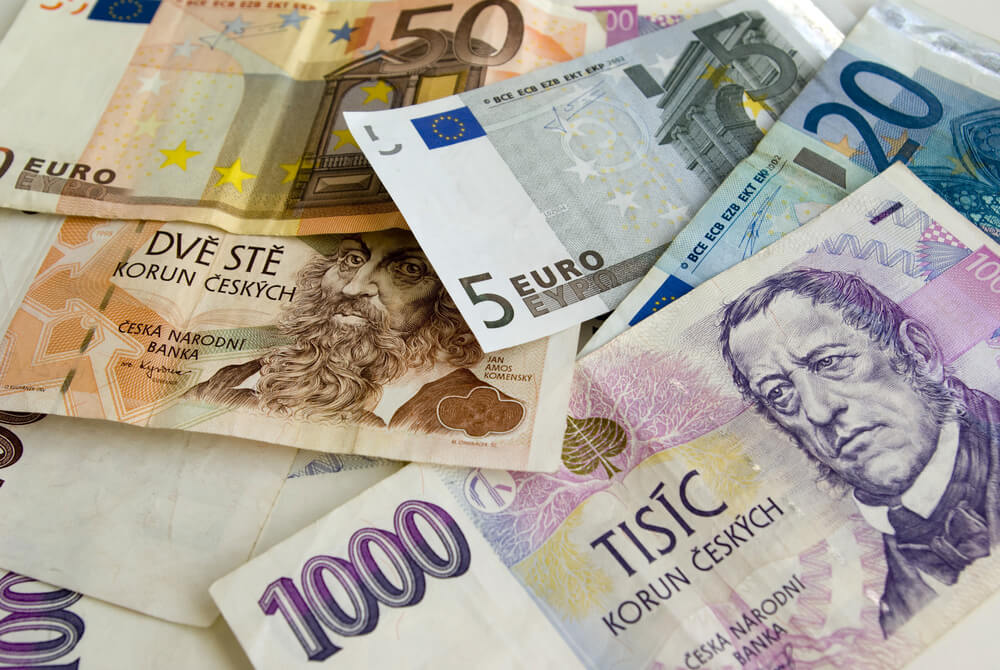Introduction
EUR/CZK is the abbreviation for the Euro Area’s euro against the Czech Koruna. This pair is an exotic-cross currency pair. Here, the EUR is the base currency, and the CZK is the quote currency.
Understanding EUR/CZK
The price of this pair in the exchange market determines the value of CZK equivalent to one euro. It is quoted as 1 EUR per X CZK. So, if the value of this pair is 26.0896, these many Korunas are required to purchase one EUR.

Spread
Spread is the difference between the bid and the ask price offered by the broker. This value is different on the ECN account model and STP account model. An approximate value for the two is given below.
ECN: 45 pips | STP: 47 pips
Fees
A fee is another term for the commission of the trade. There is no fee on STP accounts, but a few pips on ECN accounts.
Slippage
Slippage is the difference between the price intended by the trader and the price the trader actually received from the broker.
Trading Range in EUR/CZK
The trading range is the tabular representation of the pip movement of a currency pair in different timeframes. These values are useful for determining the profit that can be generated from a trade before-hand. To find the value, you must multiply the below volatility value with the pip value of this pair.

Procedure to assess Pip Ranges
- Add the ATR indicator to your chart
- Set the period to 1
- Add a 200-period SMA to this indicator
- Shrink the chart so you can assess a large time period
- Select your desired timeframe
- Measure the floor level and set this value as the min
- Measure the level of the 200-period SMA and set this as the average
- Measure the peak levels and set this as Max.
EUR/CZK Cost as a Percent of the Trading Range
This is the representation of the cost variation of trades for different timeframes and volatilities. The values are obtained by finding the ratio between the total cost and the volatility value and are expressed as a percentage.
ECN Model Account
Spread = 45 | Slippage = 3 |Trading fee = 3
Total cost = Slippage + Spread + Trading Fee = 3 + 45 + 3 = 51

STP Model Account
Spread = 47 | Slippage = 3 | Trading fee = 0
Total cost = Slippage + Spread + Trading Fee = 3 + 47 + 0 = 50

Trading the EUR/CZK
The larger the percentage values, the higher is the cost of the trade. From the above tables, we can see that the values are large in the min column and comparatively smaller in the max column. This means that the costs are high when the volatility of the market is low.
It is neither advisable to trade when the volatility of the market is high, nor when the costs are high. To have a balance between both these factors, it is ideal to trade when the volatility of the pair is in the range of the average values.
Furthermore, to reduce your costs even further, you may place trades using limit orders instead of market orders. In doing so, the slippage will not be included in the calculation of the total costs. And this will bring down the cost of the trades by a decent number. An example of the same is given below.
Spread = 45 | Slippage = 0 |Trading fee = 3
Total cost = Slippage + Spread + Trading Fee = 0 + 45 + 3 = 48


